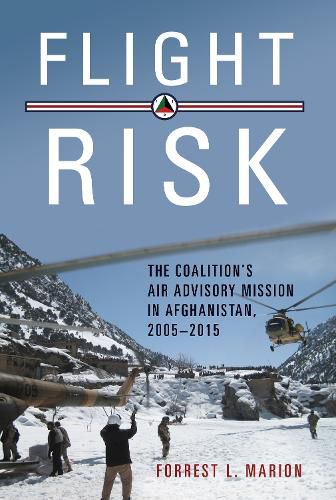Readings Newsletter
Become a Readings Member to make your shopping experience even easier.
Sign in or sign up for free!
You’re not far away from qualifying for FREE standard shipping within Australia
You’ve qualified for FREE standard shipping within Australia
The cart is loading…






From the 1920s Afghanistan maintained a small air arm that depended heavily upon outside assistance. Starting in 2005, the United States led an air advisory campaign to rebuild the Afghan Air Force (AAF). In 2007 a formal joint/combined entity, led by a U.S. Air Force brigadier general, began air advisor work with Afghan airmen.
Between 2007 and 2011, these efforts made modest progress in terms of infrastructures, personnel and aircraft accessions, and various training courses. But by 2010, advisors increasingly viewed AAF command and control (C2) as a problem area that required significant improvement if a professional air force was to be built. In the spring of 2011, major institutional changes to AAF C2 procedures were being introduced when nine U.S. air advisors were killed. The attack was the worst single-incident loss of U.S. Air Force personnel in a deployed location since 1996 and the worst insider-attack since 2001.
From the day of that tragic event, the cultural chasm between Afghanistan and the West became more apparent. This dilemma continues with no end in sight to an air advisory mission of uncertain long-term value.
$9.00 standard shipping within Australia
FREE standard shipping within Australia for orders over $100.00
Express & International shipping calculated at checkout
From the 1920s Afghanistan maintained a small air arm that depended heavily upon outside assistance. Starting in 2005, the United States led an air advisory campaign to rebuild the Afghan Air Force (AAF). In 2007 a formal joint/combined entity, led by a U.S. Air Force brigadier general, began air advisor work with Afghan airmen.
Between 2007 and 2011, these efforts made modest progress in terms of infrastructures, personnel and aircraft accessions, and various training courses. But by 2010, advisors increasingly viewed AAF command and control (C2) as a problem area that required significant improvement if a professional air force was to be built. In the spring of 2011, major institutional changes to AAF C2 procedures were being introduced when nine U.S. air advisors were killed. The attack was the worst single-incident loss of U.S. Air Force personnel in a deployed location since 1996 and the worst insider-attack since 2001.
From the day of that tragic event, the cultural chasm between Afghanistan and the West became more apparent. This dilemma continues with no end in sight to an air advisory mission of uncertain long-term value.